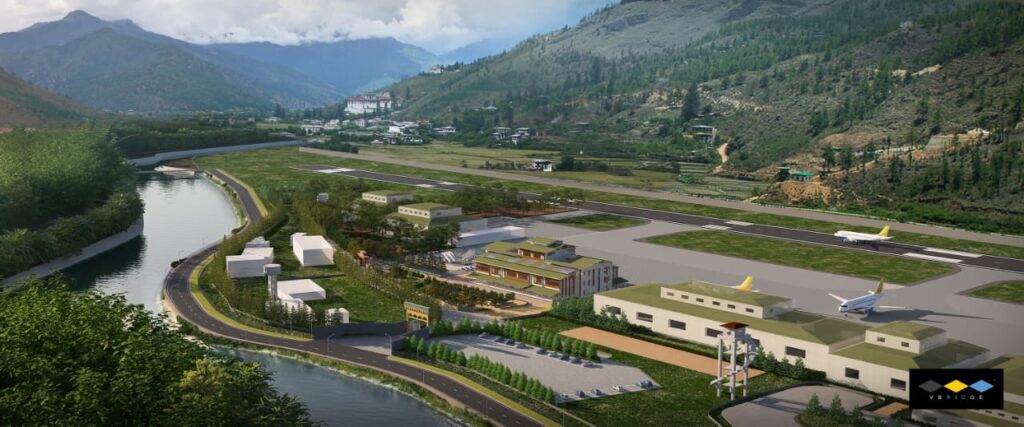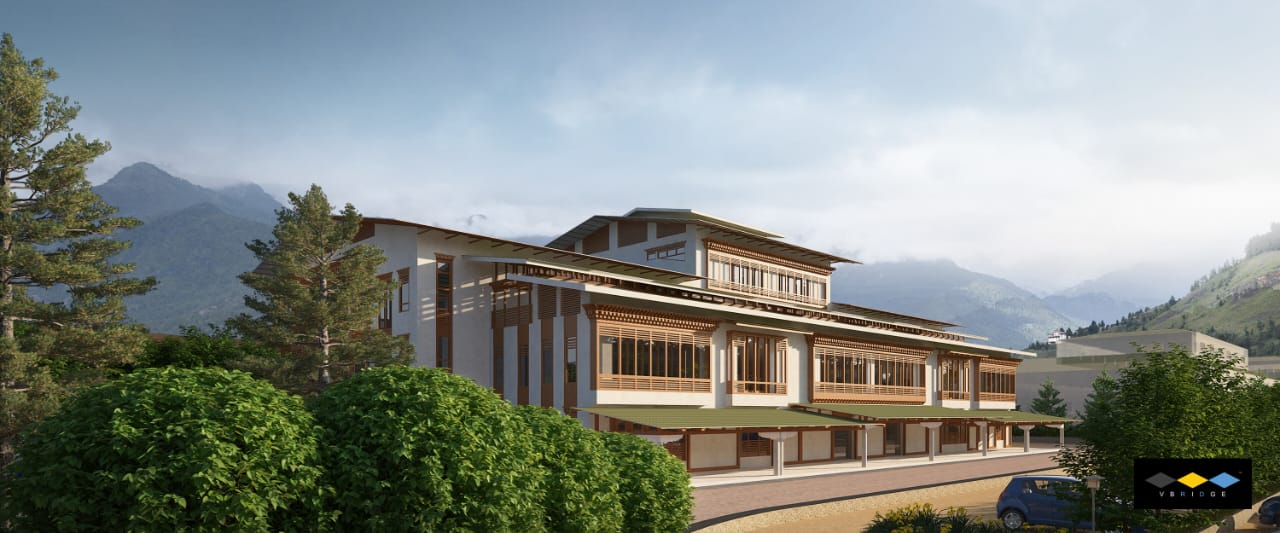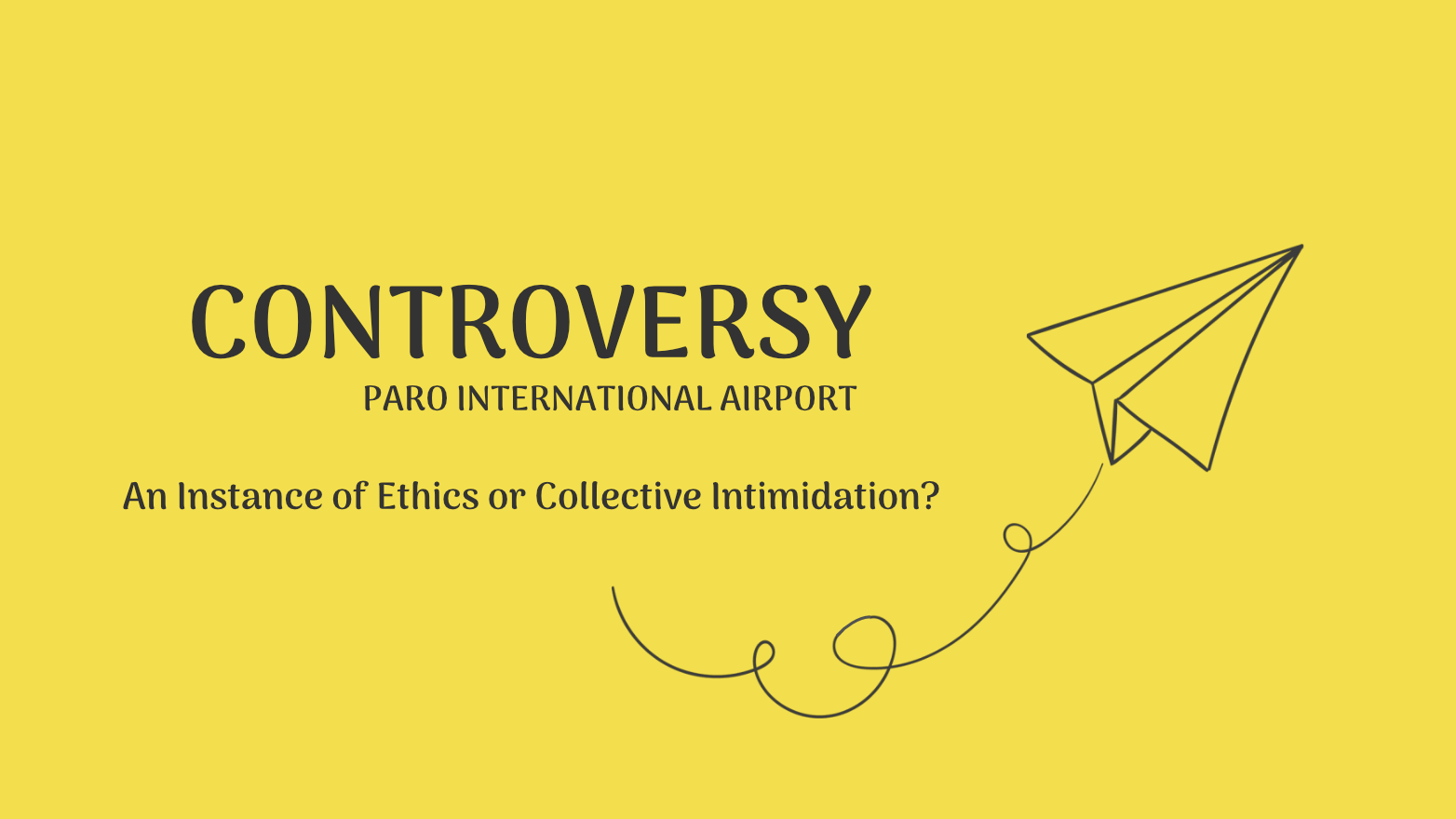Paro International Airport: An instance of Ethics or Collective Intimidation?

Since the past few days, an ongoing ‘loggerhead battle’ between Indian architects involving a Bhutan site, is being witnessed on a Facebook group of architects. What started with the apparent ‘omission’ of the ‘lead architect’s’ name from press releases has now led to a bunch of allegations ranging from fee issues to the quality of drawings. A fall-out between team members is not a rare occurrence in the field of architecture; neither is social media platforms witnessing the dialogue exchange pronounce their verdict. And in this instance of fall-out, a verdict has been indeed made. The seemingly biased siding of the community with the more senior, experienced architect against a start-up led by young architects has made us take up the case of support primarily driven by prejudice.
In 2020, the Department of Air Transport, Bhutan, released the tender for the Construction of the Domestic Terminal, Ramp Restroom and GSE Shed in Paro International Airport & Construction of the Emergency Response Centre. The Project Management Contract was awarded to Bhutan-based Mandala Consultants, who hired Kolkata-based VBRIDGE, a young start-up established in 2019. Given the eligibility criteria that called for 10 years of experience with a minimum of 5 airport infrastructures, VBRIDGE took charge of the design in 2020, in association with Architect Tilottama Lahiri, former GM of Designing at the Airports Authority of India, with about 40 years of practising experience.

Despite being in the initial years of its career, VBRIDGE, in the past few years, has been gaining increasing recognition for its work; the firm’s ‘Restructuring Jaugram’ in East Bardhaman as a model village was recognized at national and international platforms. The start-up has been featured in several news articles, with one such article instigating what eventually turned into a heated social media exchange. The said article, based on VBRIDGE designing the Paro airport in Bhutan, had no mention of Tilottama Lahiri.
The dream to fly high will now make its way to come true through real flights as the architect duo from Kolkata are set to design the Paro airport, Bhutan. The address for Bhutan flights will now get a new hue from the youngsters.
Excerpt from ‘Bhutan’s Paro airport will be decked up by two young Bengali architects, here’s the story of Ayan and Soumyodeep’, News18, Bangla- the article that initiated the conversation
Lahiri’s stance was that she was the project’s lead architect. She further revealed that she was yet to receive her remaining 20% fee, dues that have already been delayed by 15 months. What followed was an agitated Alumni group (Tilottama Laheri and the founders of VBRIDGE happen to share their alma mater) suggesting Tilottama approach the Council of Architecture and write a letter to the client complaining of professional misconduct on VBRIDGE’s part. One architect brought the issue to ArchitectureLive!’s notice, accusing VBRIDGE of possible professional misconduct.
The accusations were addressed by VBRIDGE, who issued an official clarification on their part, citing an incomplete tender process from the Bhutan team’s end as the reason for unpaid dues. The firm further said that Tilottama Lahiri was appointed as a consultant and not a lead architect and that all the drawings and the contract mentioned the same. ArchitectureLive! validated this information from the contract signed between VBRIDGE and Tilottama.
While Tilottama was referring to herself as the project’s lead architect (only one document, prepared by Mandala Consultants, mentioned Tilottama as the lead architect; the rest had her mentioned as the consultant), VBRIDGE pointed out the poor quality of the concept drawings and the lack of design calculations.
Tilottama rebutted that her contract with VBRIDGE stated that no detailing was to be provided by her with respect to the Site Plan, the preliminary and final concept designs of the Domestic Terminal Building, GSE shed, and Ramp restroom at Paro, and the Emergency Response Centre at Yonphula. She further mentioned that VBRIDGE was to be responsible for preparing detailed architectural designs.
Although there is no precise definition of a ‘Lead Architect,’ one would generally anticipate from the term that the obligations would go well beyond merely presenting concept drawings.
Addressing the unpaid dues, she clarified that her payments were exclusively linked to submissions of the deliverables and not to the clearance of dues from Mandala Consultants or the Bhutan Government’s end. The claim was also verified by ArchitectureLive!
Amidst continued support for Tilottama, VBRIDGE encouraged discussions through professional mediums over Public platforms.
“We would be eager to receive the opinion/suggestion from the concerned before heading to further legal actions if such baseless defamatory comments continue. VBRIDGE is open to dialogue over professional mediums of communication meanwhile, as we believe such conversations do not deserve a place in the Social Media or Public Forum.”
-VBRIDGE
Post this public discourse, VBRIDGE reached out to Tilottama to clear her remaining dues. However, Tilottama’s refusal to entertain a discussion on fee payment encouraged us to not consider this issue an act of professional misconduct.
“After reviewing the documents and speaking with the parties involved, I believe that this bullying of the young architects from VBRIDGE by their professional peers is completely unwarranted. There has undoubtedly been a slipup in reference to the payment of 20% of the fee to the consultant, principally because they neglected the stipulations of the ostensibly ‘one-sided contract’.”
Rajesh Advani, Founding Editor, ArchitectureLive!
ArchitectureLive! reached out to both parties involved to hear each side’s story. But, the conversations that we managed to witness on social media had a different approach. Without giving an equal platform to both the parties involved, architects pronounced a one-sided verdict in favour of Tilottama Lahiri; we witnessed an aggressive effort from senior peers to dominate two young architects.
While inclination towards a certain party’s claim is understandable, collectively trying to overpower a young firm was inessential. What we witnessed on social media platforms was an example of biased siding with the senior, more experienced architect. Despite being a small community, architects have often shown instances of being divided and needlessly publicly vocal about private matters. This thread, which started with the omission of Tilottama’s name from an article, could have ended there. There was no organic way of making the unpaid fees, drawing quality and consultant issues a part of the conversation.
This very public intimidation, brought on by prejudiced siding, reminded us of a remark made by CoA President Prof. Habeeb Khan a few weeks ago. In an article soon to be published, the outgoing Council President pointed out the divisive nature of the community of architects, wherein we do not hesitate from pulling each other down, or in his words, “We do not hesitate from washing our dirty linen in public and pulling each other’s pants down”.
This incident validated these words. The community of architects is often volatile and seldom united.
We hope that the two parties involved manage to resolve the differences and that this doesn’t turn into a collective issue involving members of the community not related to the project.
This incident also made us question the impact of ‘minimum eligibility criteria’ on the participation of young practices. We further hope that moving forward, the field of Architecture manages to provide an encouraging fertile ground for young firms to grow.
“While it is unfortunate that a fledgling company seeking to make a name for itself in a field that is already in a precarious state, would have to devote so much energy and time to defending itself, I believe it’s great that the company has had to go through this ordeal in the early phase of the practice. I hope they’ve learned their lesson and, going forward, they receive the deserving support from the fraternity.”
Rajesh Advani, Founding Editor, ArchitectureLive!








